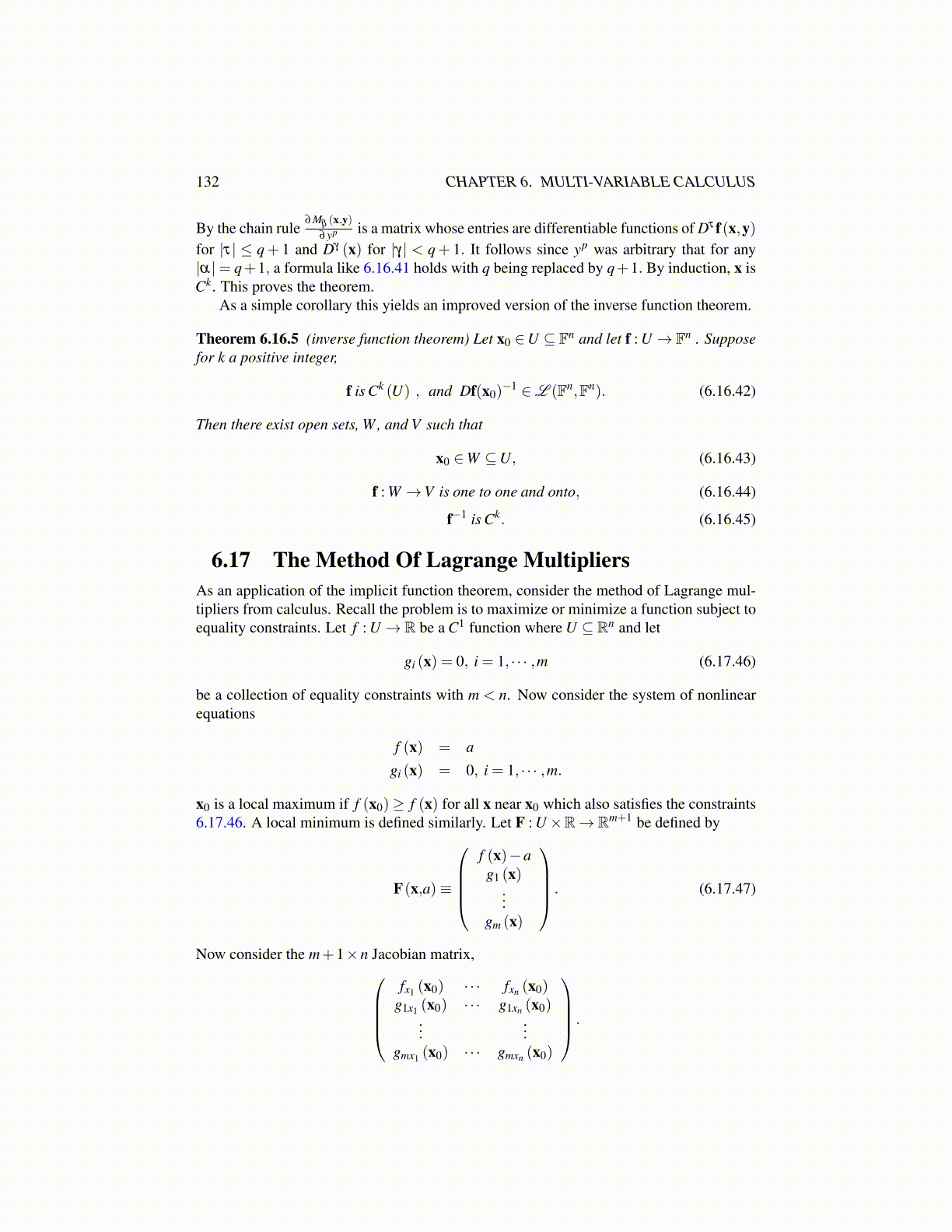
132 CHAPTER 6. MULTI-VARIABLE CALCULUS
By the chain rule∂Mβ (x,y)
∂yp is a matrix whose entries are differentiable functions of Dτ f(x,y)for |τ| ≤ q+ 1 and Dγ (x) for |γ| < q+ 1. It follows since yp was arbitrary that for any|α|= q+1, a formula like 6.16.41 holds with q being replaced by q+1. By induction, x isCk. This proves the theorem.
As a simple corollary this yields an improved version of the inverse function theorem.
Theorem 6.16.5 (inverse function theorem) Let x0 ∈U ⊆ Fn and let f : U → Fn . Supposefor k a positive integer,
f is Ck (U) , and Df(x0)−1 ∈L (Fn,Fn). (6.16.42)
Then there exist open sets, W, and V such that
x0 ∈W ⊆U, (6.16.43)
f : W →V is one to one and onto, (6.16.44)
f−1 is Ck. (6.16.45)
6.17 The Method Of Lagrange MultipliersAs an application of the implicit function theorem, consider the method of Lagrange mul-tipliers from calculus. Recall the problem is to maximize or minimize a function subject toequality constraints. Let f : U → R be a C1 function where U ⊆ Rn and let
gi (x) = 0, i = 1, · · · ,m (6.17.46)
be a collection of equality constraints with m < n. Now consider the system of nonlinearequations
f (x) = a
gi (x) = 0, i = 1, · · · ,m.
x0 is a local maximum if f (x0)≥ f (x) for all x near x0 which also satisfies the constraints6.17.46. A local minimum is defined similarly. Let F : U×R→ Rm+1 be defined by
F(x,a)≡
f (x)−ag1 (x)
...gm (x)
. (6.17.47)
Now consider the m+1×n Jacobian matrix,fx1 (x0) · · · fxn (x0)
g1x1 (x0) · · · g1xn (x0)...
...gmx1 (x0) · · · gmxn (x0)
.